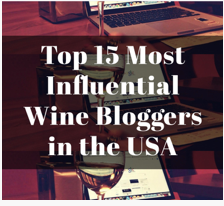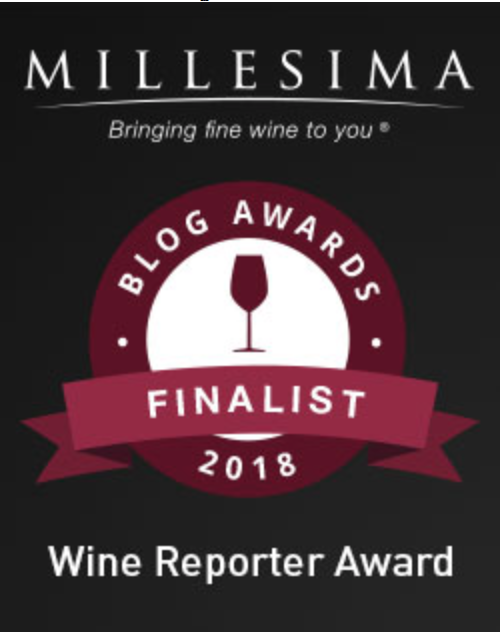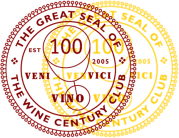On National Rosé Day (June 9th), I invited a few writers here in Houston to my house for what I believe to be was the largest blind tasting of American True Rosés in history. What is a “True Rosé”?
Well, there are essentially three ways to make a rosé wine. The first, which is rarely practiced outside of sparkling wine production, is simple blend of red wine and white wine. The second, which is widely practiced around the world, is called the “Saignée Method” where shortly after a red grape crush, a portion of the grape juice (after brief contact with the skins) is bled off (“saignée” means “bled” in French). This bled off wine is then vinified as if it were a white wine.
The third option is what I call a “True Rosé.” In this process, the grapes are raised, picked, and processed with the idea of making a rosé in mind. True Rosés are therefore not a byproduct of red wine production, they are intentionally or purposefully made. They are True Rosés.

68 Rosés bagged and ready….
Since I have started this “True Rosé” quest a couple of years ago, I have often been met with blank stares as I try to describe the different ways to produce a pink wine. Some have even said: “I thought a rosé was just a rosé.” Or:”What does it matter if it tastes good?”
While there is certainly arguments to be made for either approach, I still contend that every rosé is not made equally and the way a rosé is made impacts taste.
As I have mentioned many times before, there are several ways to make a rosé wine: a simple blend of red and white wines [which is rare], the saignée method (which is a by-product of red wine production), and a True Rosé (in which the grapes were treated from the start with the intention of being a rosé).
Coincidentally, there are, essentially, three ways to make a sparkling wine, with increasing levels of quality: the infusion method (carbonation is infused into the wine like soda-pop), the Charmat method and its derivations (the second fermentation occurs in large tanks), and the traditional method (the second fermentation occurs in the bottle—the “Champagne method”).
As with rosé production, there are fine examples of sparkling wines made with each method (I tasted a infusion method sparkler this week that was quite refreshing and tasty). In fact, two of my favorite sparkling wine producers, Nino Franco and Masottina, are Proseccos and the secondary fermentations occur in large tanks.
Delightful wines which I would suggest to any and everyone.
But.
I think there are very few people who would disagree with the following: all things being equal, generally speaking, the traditional method creates more complex and age-worthy wines than do the other sparkling wine methods.
Now, I understand that there is certainly a value argument to be made. And I would also agree that in many instances I would prefer a $30 bottle of Prosecco Superiore (DOCG) to a $30 bottle of entry-level champagne.
But.
The key to my argument is price is not always the final arbiter. Sure, it is the point at which most comparisons are made, and I get that, but when it comes to evaluating winemaking methods, taste should be the determining factor.
In other words, would you prefer an “average” (in the sense of “middle of the road” not “inferior” as the term is sometimes used) Charmat method wine or an “average” Traditional method sparkler? To me, that choice is clear.
Just as it is with rosé—I would prefer a True Rosé to a saignée given the same position in their relative hierarchies.
Now, I know that the comparison is not seamless, but I also know that the time has come to stop thinking of rosé as an afterthought and to start thinking of it as a serious wine. Many still see sparkling wine as merely a celebratory wine, one to be used as an apéritif and no more. Well, sparklers can be serious wines, worthy of inclusion on the table with just about any cuisine.
Just like rosé.
A couple of weeks ago, seven of us tried 68 American Rosés on Saturday, trying to find the best. As promised, I am publishing my actual notes from the tasting, which we tasted in 17 flights of four wines. Here are flights 13-15.

Almost all 68 (I received a few more after this photo).
2016 Sanford Rosé of Pinot Noir, Sta. Rita Hills, CA: Retail $25. Light pink. Tight, with strawberry and white flower. Really great fruit and acidity. Yummy to the core, this is fantastic. Outstanding. 92-94 Points.
2017 Scheid Estate Pinot Noir Rosé, Monterey County, CA: Retail $22. Medium to dark. Baked strawberry rhubarb. Sweet fruit, good acidity, really nice. Certainly one of the better wines in the tasting. Outstanding. 91-93 Points.
2016 Onward Rosé of Pinot Noir, Redwood Valley, CA, Hawkeye Ranch: Retail $22. Light pinkish orange. Subtle notes of oxidation and caramel. This has to be one with some age on it as the fruit has faded, but still, what a nose. Just delicious. Hint of coffee, too. On the palate, rich and sweet fruit. This is yummy. Close to a whoa. Outstanding. 92-94 Points.
2016 Kokomo Grenache Rosé, Dry Creek Valley, CA, Pauline’s Valley: Retail $24. Light pinkish orange. Melon with a dash of funk. Good fruit, good acidity, solid wine, just a shade short of spectacular. Outstanding. 90-92 Points.
2017 Tongue Dancer Rosé of Pinot Noir, Sonoma Coast, CA: Retail $25. Medium pink-orange. A bit on the funky side with ripe red berry fruit, and a touch of sweetness that suggests residual sugar. Good tartness, solid. Very Good to Outstanding. 88-90 Points.
2016 Jaqk Cellars Charmed Rosé, California, CA: Retail $12. Peach and floral notes on the nose as well as a bit of funk. Not a ton of fruit here, a bit chalky, but a solid finish. Nice. Very Good to Outstanding. 88-90 Points.
2017 Quady North Counoise Rosé, Applegate Valley, OR: Retail $20. Quite light. Sweet, fruity peach. Tart fruit, good acidity, but an odd astringency on the finish. The second time around, though, that astringency was gone. Very Good to Outstanding. 88-90 Points.
2016 Keller Estate Rosé of Pinot Noir, Sonoma Coast, CA: Retail $35. Floral with some strawberry fruit. Good fruit, but a bit lacking in acidity. Decent, but pales a bit when compared to the others. Very Good. 87-89 Points.
2016 Stoller Pinot Noir Rosé, Willamette Valley, OR: Retail $25. Funky. Strawberry. Good red berry fruit, moderate acidity, another solid effort, but could use a bit more tartness. Very Good. 87-89 Points.
2016 Lazy Creek Vineyards Rosado, Anderson Valley, CA: Retail $22. Strawberry rhubarb. Fruity, tart, very nice. A bit astringent on the finish, but tasty. Very Good to Outstanding. 88-90 Points.
2017 Kramer Vineyards Rosé of Pinot Noir, Yamhill-Carlton, OR: Retail $22. Fruity nose apple, peach. Moderate fruit, Average acidity. There is nothing missing, but lacks the pizzaz of others. Very Good. 87-89 Points.
2017 Acquiesce Grenache Rosé, Lodi, CA: Retail $25. Light pink. Floral but not quite fruity. Sweet fruit, very nice. A tad light on the tartness. Very Good to Outstanding. 88-90 Points.








Pingback: Wine Blog Daily Friday 7/13/18 | Edible Arts
Reblogged this on the drunken cyclist and commented:
I had planned to finish publishing the tasting notes for my Rosé tasting, but as I opened this post as a template for today’s new article, I noticed in horror that this post was an earlier version of what I intended to publish. In fact, it had all the tasting notes from the previous week (Flights 10-12) instead of the intended Flights 13-15. Ugh. I will publish the last two flights tomorrow along with some overall observations.
LikeLike
Pingback: Wine Blog Daily Friday 7/20/18 | Edible Arts